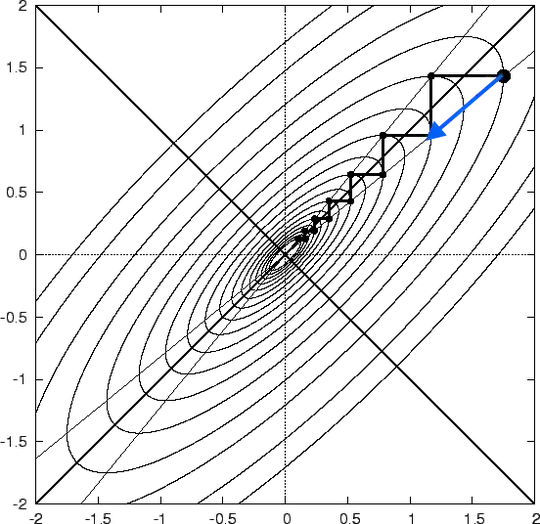The gradient $\nabla f(x)$ points in the direction $u$ such that the directional derivative $D_u f(x)$ is as large as possible. You probably walk downhill in the direction of steepest descent, despite the fact that the lowest point on earth is the Dead Sea and you are probably walking in completely the wrong direction to reach it.
Edit:
Maybe walking down a hill is not a perfect analogy because it makes it seem like the "direction of steepest descent" should be a vector in $\mathbb R^3$, with a $z$ component as well as $x$ and $y$ components.
Perhaps a better analogy is a bug walking on a hot (painfully hot!) sidewalk. The bug moves in the direction of steepest descent (the direction in which temperature decreases most quickly), but the bug does not realize that the coolest spot on the sidewalk is ten meters in the opposite direction, where there is shade. Hopefully in this analogy it's clear that the temperature is a function $f(x,y)$, and the direction of steepest descent is a vector with an $x$ component and a $y$ component, but no $z$ component.
